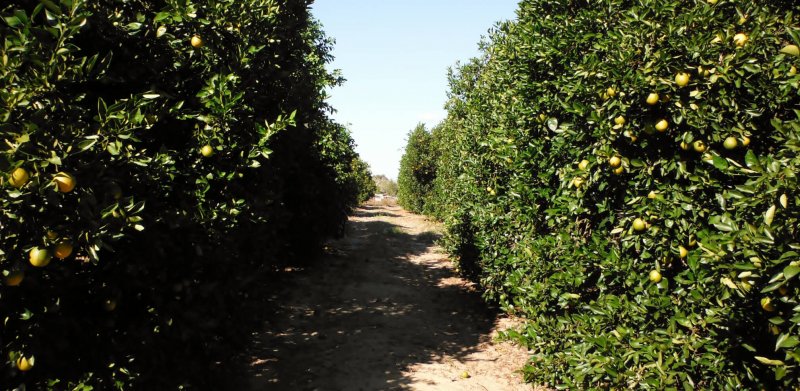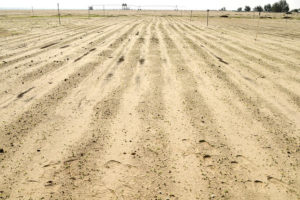A New Way to Slash CO2 Emissions
U.S. entrepreneurs say a new technique can achieve big cuts in atmospheric carbon. Florida’s citrus crops respond well to the new soil additive. (Mmacbeth / Wikimedia Commons)
Florida’s citrus crops respond well to the new soil additive. (Mmacbeth / Wikimedia Commons)
Soil health improvement, a technique known as carbon farming, could cut the amount of carbon dioxide in the Earth’s atmosphere by more than one-sixth, a US business group says.
It says a concerted effort by the world’s farmers to restore and protect soil health could reduce atmospheric carbon dioxide by as much as 65 parts per million (ppm) from its current level of more than 415 ppm.
It made the announcement at a webinar on carbon farming which it hosted here in April. A full report of the webinar appears on the website of the The Energy Mix.
The group, the US-based Environmental Entrepreneurs (E2), describes itself as “a national, nonpartisan group of business leaders, investors, and professionals from every sector of the economy who advocate … smart policies that are good for the economy and good for the environment”
World leaders … said that regenerative agriculture to naturally conserve and protect topsoil and support its fertility and resilience were “a huge carbon capture opportunity”
The total saving of 65 ppm represents the estimated amount of carbon that human activity has removed from the soil since the dawn of industrial agriculture.
But, E2 says, even if its eventual contribution to climate stabilisation falls well short of this figure, drawing attention to soil carbon sequestration could still concentrate minds on a climate solution often neglected in comparison with more complex and often riskier options for emission cuts.
E2 says a critical step in advancing climate-friendly soil health in the US is the ground-breaking Soil Health Demonstration Trial, a carbon farming pilot project that a coalition of farmers, agricultural technology entrepreneurs and environmentalists managed to persuade a deeply divided US Congress to accept in the December 2018 farm bill, the Agricultural Improvement Act of 2018.
The idea for the carbon farming pilot emerged in the wake of the UN’s 2016 annual climate conference, known as COP23, held in the German city of Bonn. World leaders there said that regenerative agriculture to naturally conserve and protect topsoil and support its fertility and resilience were “a huge carbon capture opportunity”.
Microbial key
Carbon farming depends on the activity of microbes in the soil, says E2. Through photosynthesis, plants remove vast amounts of CO2 from the atmosphere and convert it into sugars. They use as much as 30% of these sugars to “recruit and nurture” huge, diverse populations of microbes around their root systems.
The microbes help the plants take up nutrients, retain water and tolerate stress, functioning as a key part of the process by which plants produce the roots and leaves that end up as carbon in the soil. When they die, they deposit huge amounts of carbon in the soil.
Scientists have developed a new microbial soil additive that substantially increased soil carbon sequestration in trial applications to California grapes and citrus fruit in Florida.
In the citrus trial, after scientists treated one acre of land three to four times over the course of a year, soil carbon increased by 32%, to 4.3 tons. Soil greenhouse gas emissions decreased by 2.33 tons, reckoned to be the rough equivalent of the CO2 produced by driving a car with an internal combustion engine for a whole year.
Depositing four tons of carbon per acre in just 10% of California’s agricultural land, it is estimated, would be the equivalent of taking 4.3 million cars off the road.
Your support matters…
Independent journalism is under threat and overshadowed by heavily funded mainstream media.
You can help level the playing field. Become a member.
Your tax-deductible contribution keeps us digging beneath the headlines to give you thought-provoking, investigative reporting and analysis that unearths what's really happening- without compromise.
Give today to support our courageous, independent journalists.






You need to be a supporter to comment.
There are currently no responses to this article.
Be the first to respond.